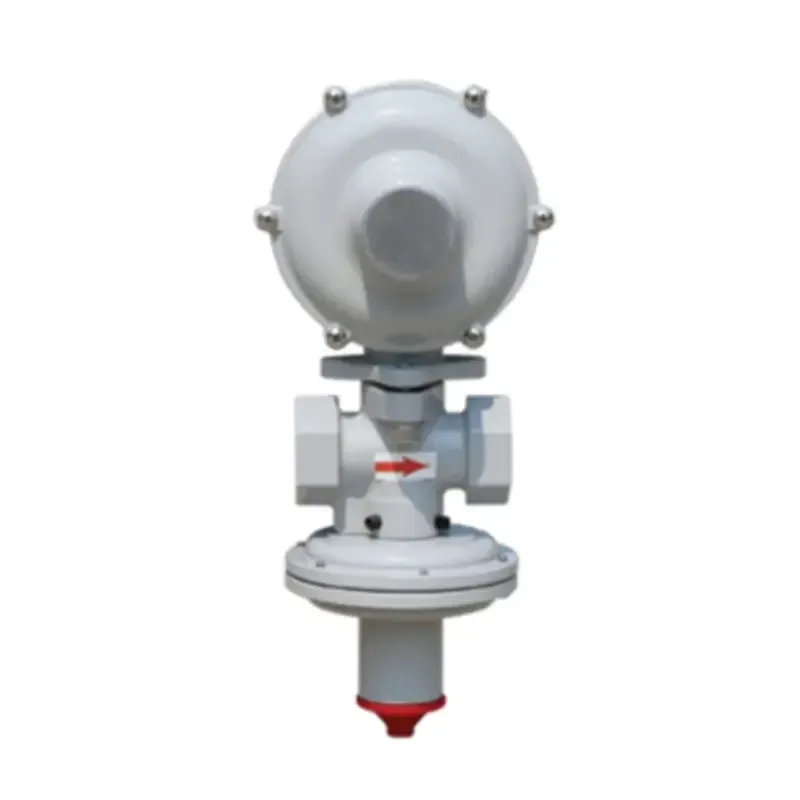
Nov . 19, 2024 16:26
Back to list
Gas Pressure Regulator for Efficient Flow Control and Safety Management
Understanding Gas Pressure Reducers
Gas pressure reducers are essential components in various industrial and residential applications. Their primary role is to ensure that the pressure of gas flowing through a system is maintained at safe and usable levels. These devices are crucial for the efficient operation of gas applications, ranging from domestic heating systems to large-scale industrial processes.
What is a Gas Pressure Reducer?
A gas pressure reducer, also known as a gas regulator, is a device that reduces the pressure of incoming gas to a predetermined level. The high-pressure gas entering the system is transformed into a stable, lower pressure that is necessary for safe operation. This transformation is vital to prevent potential hazards associated with high-pressure gas, which can lead to leaks, blasts, or inefficient operation of appliances.
How Do They Work?
The functioning of a gas pressure reducer involves a simple yet effective mechanism. When high-pressure gas enters the reducer, it encounters a diaphragm that responds to the varying pressure levels. If the pressure is too high, the diaphragm pushes against a spring mechanism, which opens a valve allowing the gas to flow out at a controlled rate and pressure. Conversely, when the pressure drops below a certain threshold, the diaphragm releases, closing the valve to maintain the desired pressure.
This process is energy-efficient and ensures that gas flow remains constant despite fluctuations in supply pressure. The ability to maintain a stable pressure is crucial for the performance of equipment that uses gas, such as furnaces, boilers, and cooking appliances.
Types of Gas Pressure Reducers
Gas pressure reducers can be categorized into different types based on their design and applications
.
2. Two-Stage Regulators These are used in applications requiring a more stable output pressure across a wider range of input pressures. They first reduce the pressure to an intermediate level and then further to the final desired pressure.
مخفض ضغط الغاز

3. Electronic Regulators These sophisticated devices use electronic controls to maintain the desired pressure level accurately. They are typically used in high-tech applications where precision is essential.
Applications of Gas Pressure Reducers
Gas pressure reducers are utilized across various sectors, including
- Residential Use In homes, gas pressure reducers are integral to the safe and efficient functioning of appliances such as water heaters, stoves, and heaters that operate on natural gas or propane.
- Industrial Use In industrial settings, these regulators are crucial for the safe operation of machinery and equipment that use gas as fuel. They help maintain the required pressure for processes such as welding, cutting, and heating.
- Medical Applications In the medical field, gas pressure reducers ensure that gases such as oxygen are delivered at safe and consistent pressures to patients.
Importance of Maintenance
Proper maintenance of gas pressure reducers is essential to ensure their reliability and safety. Regular inspections, cleaning, and replacement of worn parts can prevent malfunctions that could lead to dangerous situations. It is crucial for users to follow the manufacturer’s guidelines for maintenance and servicing intervals.
Conclusion
Gas pressure reducers play a vital role in the safe and efficient management of gas in various applications. By ensuring that gas is delivered at the correct pressure, these devices help prevent accidents, enhance the performance of gas-powered equipment, and ultimately contribute to energy efficiency. Whether in a residential or industrial context, understanding the importance and functioning of gas pressure reducers is essential for anyone involved in managing gas systems. Their proper installation, operation, and maintenance can significantly impact the overall safety and efficiency of gas usage.
Latest news
-
Safety Valve Spring-Loaded Design Overpressure ProtectionNewsJul.25,2025
-
Precision Voltage Regulator AC5 Accuracy Grade PerformanceNewsJul.25,2025
-
Natural Gas Pressure Regulating Skid Industrial Pipeline ApplicationsNewsJul.25,2025
-
Natural Gas Filter Stainless Steel Mesh Element DesignNewsJul.25,2025
-
Gas Pressure Regulator Valve Direct-Acting Spring-Loaded DesignNewsJul.25,2025
-
Decompression Equipment Multi-Stage Heat Exchange System DesignNewsJul.25,2025

